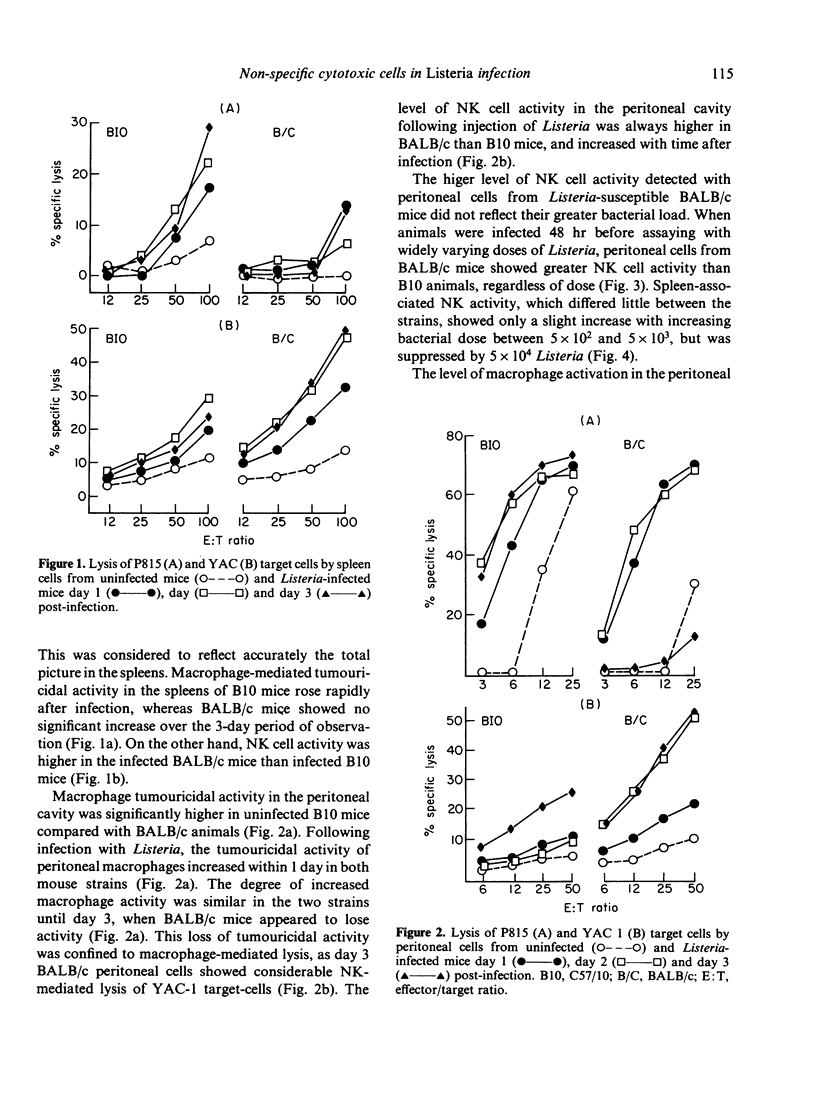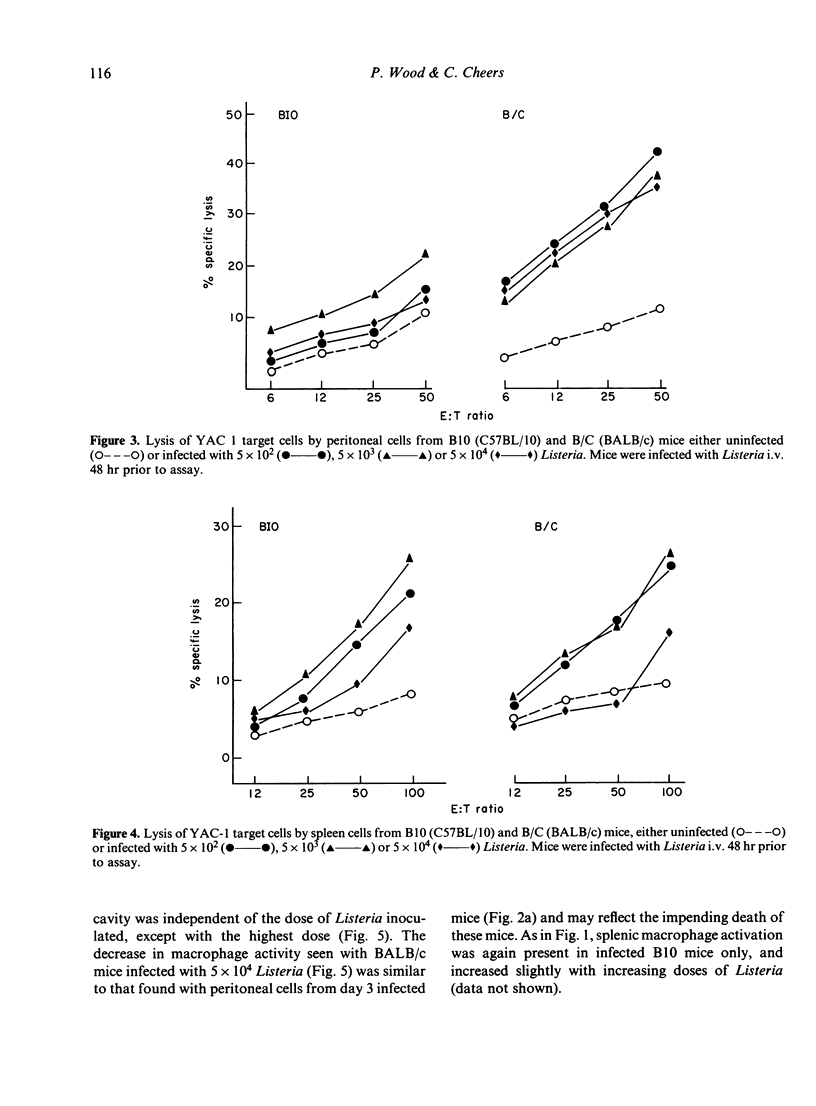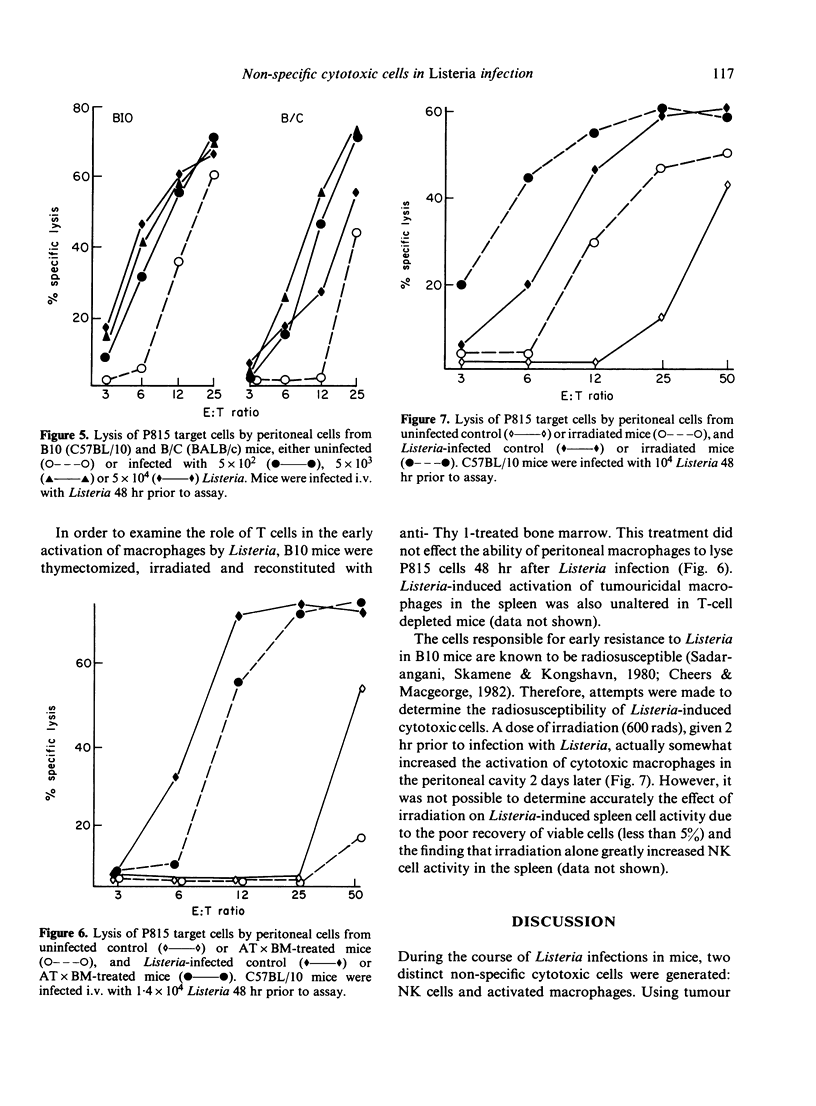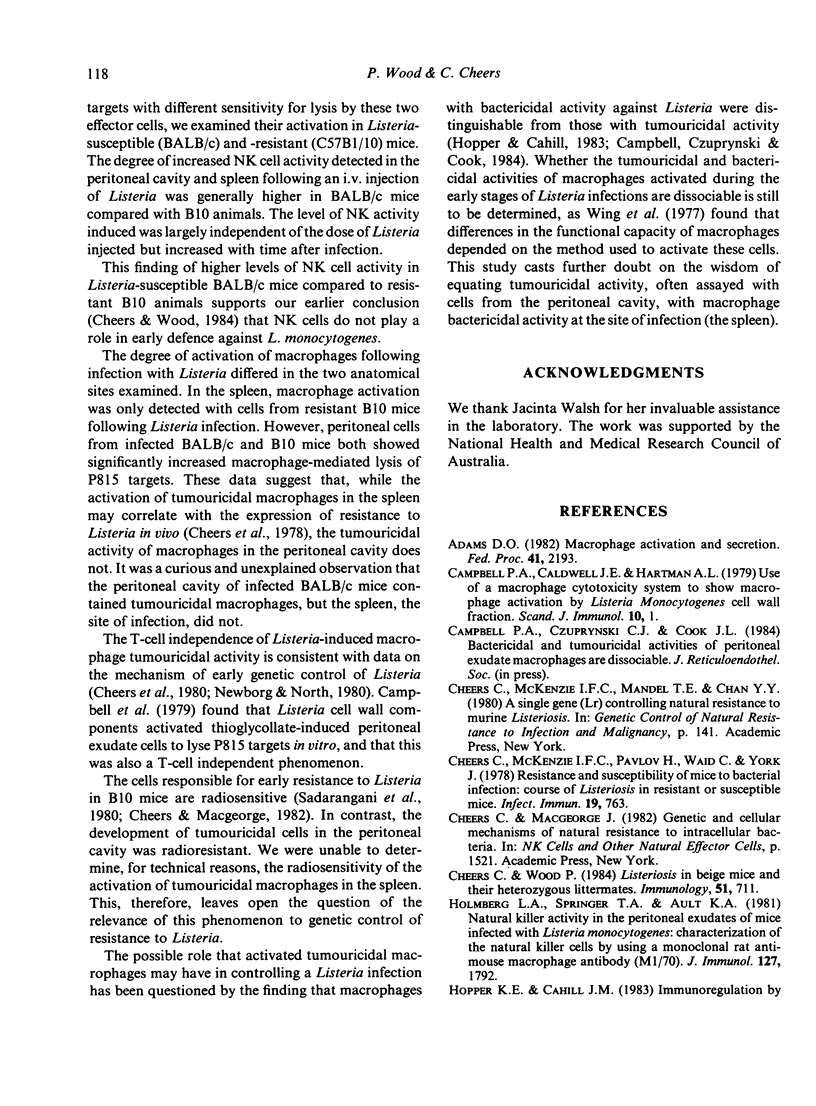Abstract
An increase in macrophage tumouricidal activity in the spleen was demonstrated following intravenous infection of genetically resistant C57BL/10 mice with Listeria monocytogenes, but not after infection of BALB/c mice. However, tumouricidal macrophages appeared in the peritoneal cavity of both strains after infection, while NK cell activity was generally higher in BALB/c mice. The activation of tumouricidal macrophages and NK cells in the C57BL/B10 mice was T independent and, at least in the peritoneal cavity, radioresistant (600 rads). The relevance of these results to the genetic control of resistance to Listeria is discussed.
Full text
PDF






Selected References
These references are in PubMed. This may not be the complete list of references from this article.
- Cheers C., McKenzie I. F., Pavlov H., Waid C., York J. Resistance and susceptibility of mice to bacterial infection: course of listeriosis in resistant or susceptible mice. Infect Immun. 1978 Mar;19(3):763–770. doi: 10.1128/iai.19.3.763-770.1978. [DOI] [PMC free article] [PubMed] [Google Scholar]
- Cheers C., Wood P. Listeriosis in beige mice and their heterozygous littermates. Immunology. 1984 Apr;51(4):711–717. [PMC free article] [PubMed] [Google Scholar]
- Holmberg L. A., Springer T. A., Ault K. A. Natural killer activity in the peritoneal exudates of mice infected with Listeria monocytogenes: characterization of the natural killer cells by using a monoclonal rat anti-murine macrophage antibody (M1/70). J Immunol. 1981 Nov;127(5):1792–1799. [PubMed] [Google Scholar]
- Hopper K. E., Cahill J. M. Immunoregulation by macrophages II. Separation of mouse peritoneal macrophages having tumoricidal and bactericidal activities and those secreting PGE and interleukin I. J Reticuloendothel Soc. 1983 Jun;33(6):443–456. [PubMed] [Google Scholar]
- Keller R. Macrophage-mediated natrual cytotoxicity against various target cells in vitro. I. Macrophages from diverse anatomical sites and different strains of rats and mice. Br J Cancer. 1978 May;37(5):732–741. doi: 10.1038/bjc.1978.111. [DOI] [PMC free article] [PubMed] [Google Scholar]
- MACKANESS G. B. THE IMMUNOLOGICAL BASIS OF ACQUIRED CELLULAR RESISTANCE. J Exp Med. 1964 Jul 1;120:105–120. doi: 10.1084/jem.120.1.105. [DOI] [PMC free article] [PubMed] [Google Scholar]
- Newborg M. F., North R. J. On the mechanism of T cell-independent anti-Listeria resistance in nude mice. J Immunol. 1980 Feb;124(2):571–576. [PubMed] [Google Scholar]
- Roder J. C., Lohmann-Matthes M. L., Domzig W., Kiessling R., Haller O. A functional comparison of tumor cell killing by activated macrophages and natural killer cells. Eur J Immunol. 1979 Apr;9(4):283–288. doi: 10.1002/eji.1830090407. [DOI] [PubMed] [Google Scholar]
- Sadarangani C., Skamene E., Kongshavn P. A. Cellular basis for genetically determined enhanced resistance of certain mouse strains to listeriosis. Infect Immun. 1980 May;28(2):381–386. doi: 10.1128/iai.28.2.381-386.1980. [DOI] [PMC free article] [PubMed] [Google Scholar]


